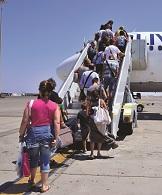
The one logistic that can make or break an event is transportation. The reason being is that transportation is both the first and final happening of an event. If there are problems with either, the attendee will soon forget how well organized the actual event was.
According to budget, the
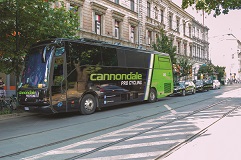
re are a number of transportation options to transport teams to out-of-town events. The options to be discussed here are motor coach, group air travel and charter air travel. Each has its own set of pros and its own set of cons.
Motor Coach Travel
One of the most common forms and least expensive modes of travel is motor coach travel. Everybody has heard stories and seen movies of minor league baseball teams traveling from city to city aboard a chartered bus. For those who are budget-minded, this is the favored mode of travel. The cost is relatively inexpensive compared to air travel. Another advantage is that the team will have a built-in mode of transportation from their hotel to the venue. As well, the team will have a mode of transportation in case they wish to tour the host city, eat at a restaurant that is not within walking distance of their hotel, etc. Having a bus at their disposal becomes very handy.
However, there are also cons of motor coach travel. The first and foremost is the time and distance restriction. As some in the reaches of West Texas may not deem it unusual to take a six-hour bus trip to compete, a team from the cities of the Northeast may deem it totally unacceptable. Where air travel allows the team to arrive in a relatively short amount of time to allow them to rest and recuperate from the trip, motor coach travel does not offer this. To travel long distances via motor coach is tiring and takes a much greater amount of time to recuperate. Also, the chance of the motor coach breaking down along the route is always a possibility.
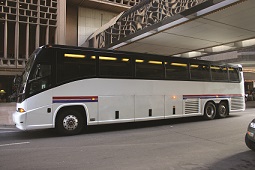
Group Air Travel
One of the most misunderstood topics of transportation is group air travel. If understood, this mode of travel can be a team’s best friend. However, if not understood, it can be an expensive lesson.
Unlike purchasing individual airline tickets which have to be ticketed within 24 hours, group air travel (a group is defined by 10 or more traveling together on the same flight) can be held with no names for months on end. An airline will normally require a nominal deposit (normally $50 domestic and $100 international) to hold the seats. However, if you go with a professional travel company that holds status with the airline, the airline will waive the deposit all together. Therefore, a team can hold a multitude of seats with no names and no deposit. This is particularly important for those teams who have a qualification process in order to make the team such as Elite Gymnastics.
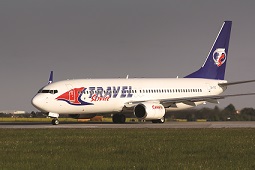
The con with group air travel is that the group fare is not always the lowest price. An aircraft is divided into buckets of seats. The first seats purchased are normally the lowest cost and then the cost escalates as the supply of seats decreases. Therefore, group air travel actually goes against the normal law of economics which is the more of a product purchased, the lower the cost. In this case, if a team purchases 30 seats, they very well may get a much better price than if they purchase 150 seats. The reason is that the 150 seats will reach across a number of bucket fare increase thresholds where the 30 seat block doesn’t. However, all seats will be the same cost. In reality, it would be no different than if a team leader sat down to book 150 seats. The first ones would be much less expensive than the last ones. What group air travel does is average the price over multiple fare thresholds.
Another thing to be aware of in a group air contract is the utilization date. This is the date that as many seats (or the entire contract) can be cancelled with no penalty. After this date, only a specified percentage of seats (normally 10 percent to 20 percent) can be cancelled with no penalty. If a team goes with a professional travel management company, they will monitor the dates and let the team leader know well in advance.
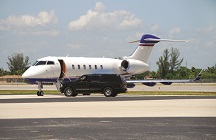 Charter Air Travel
Charter Air Travel
The most desirable form of team travel but the most expensive is charter air travel. The difference between group air travel and charter air travel is that with charter air travel, the team will own the entire aircraft. The route with charter air travel will be direct from origination to destination with no stops (unless contracted to stop and pick up other members of the team) whereas group air travelers are on normally scheduled aircraft and can include one or more stops between origination point and destination point. As well, the airline will work with teams on departure and return times. This is the mode that most collegiate football teams take. The team will take up the entire aircraft and can normally go into a city the day of or day before the game and out immediately after the game. Charter air travel does not strap a team to a schedule. This way, the student athlete only misses a minimal amount of classwork time.
Another advantage is the ease of charter aircraft. Many airlines that charter will allow the team to embark and debark directly on the tarmac. I have seen an aircraft land, stop on the tarmac, unload the team and baggage directly on to the bus, and immediately proceed to the hotel. This is much more advantageous than having to claim luggage in the terminal and being mixed in with normal airline traffic. Also, charter air groups are much more lenient with last minute name changes, etc.
As stated above, the main downfall of charter air travel is the price. With charter air travel, an airline will take an entire aircraft out of service to accomplish the trip. Many times, the aircraft must “deadhead” into an origination city or “deadhead” out of the destination city in order to be put back into regular service. This is why charter air is less expensive in the hub cities of the major airlines.
Summary
As stated in the beginning, each mode of travel has its pros and its cons. With any of the three modes of travel, it is best to utilize the services of an experienced travel management company. These companies have good relationships with the major airlines and motor coach companies and will help a team navigate through the questions and contractual obligations that each entails.

